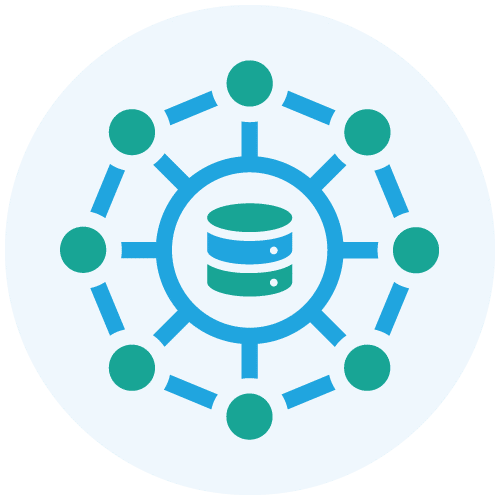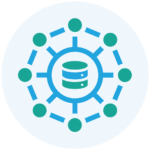Customer Data Platform (CDP) vs. Master Data Management (MDM): What’s the Difference?


Table of Contents
In the evolving landscape of data management, data leaders are often faced with the decision of whether to invest in a customer data platform (CDP) or a master data management (MDM) solution. Understanding the differences, use cases and synergies between these two platforms can significantly impact the efficiency and capabilities of an organization’s data governance strategy.
In this article, we’ll dissect the key aspects of CDP vs MDM and help you determine the best fit for your business needs.
Let’s get started!
What is a Customer Data Platform (CDP)?
A customer data platform (CDP) is a marketing-centric tool that aggregates and organizes customer data across various touchpoints. It provides a comprehensive, unified customer profile — often referred to as customer 360 — that marketing teams can use to improve customer experiences and create targeted campaigns.
CDPs are single-domain data management platforms, meaning they only handle one broad category of data — customer data. Customer data in a CDP can come from a variety of sources, including:
- Customer relationship management (CRM) systems like Salesforce or HubSpot
- Marketing automation tools like Marketo or Pardot
- Finance and legal departments
- Omnichannel sales channels including in-person point of sale (POS) systems and online and mobile orders
- Social media
In addition to aggregating customer data from a variety of sources, CDPs usually support integrations with third-party data services like Dun & Bradstreet and Melissa to enrich and validate collected data.
What is Master Data Management (MDM)?
By contrast, master data management represents a holistic approach to managing enterprise-wide data. It serves as the backbone for all core business operations, providing a single source of truth for master data across multiple domains. Whether it’s customer information, product data, location data or something else, MDM consolidates disparate systems to enable consistent, cross-functional decision-making and analytics.
While most modern MDM tools are multidomain, customer data is a very commonly managed domain that data professionals manage with MDM. Similar to a CDP, an MDM tool can pull customer data from multiple sources and integrate it into one unified repository. But multidomain MDM can also do much more, namely enriching customer data with data from other domains and standardizing it across the entire enterprise — not just the marketing department.
Benefits of CDP and MDM
At a glance, CDP and MDM seem to offer similar benefits. Both solutions help you get better customer insights by enabling customer data management. They can also help you improve and maintain data quality by compiling customer data from disparate data sources and integrating it into a single location. Other benefits of CDP and MDM include the following:
Benefits of CDP
Benefits of MDM
Improved customer experience
With better access to customer data, marketing teams can refine their strategies to provide for a better customer experience that drives conversions and brings in repeat business.
Trusted insights
Perhaps the biggest benefit of master data management is that it allows you to obtain trustworthy insights from your data across the entire enterprise. This enables better decision making and sales forecasting in addition to helping you tap into unexplored revenue opportunities.
Increased agility
CDP solutions let marketing teams harness customer data to build highly-targeted marketing campaigns. This helps marketers to be more independent and nimble when building effective campaigns since they can self-service many of their data needs.
AI enablement
By providing a trusted foundation of data for downstream consumption, MDM helps you with initiatives to incorporate AI throughout your organization. Without trustworthy, consumption-ready data, copilots and other AI apps are prone to outputting false information and bad insights. MDM helps prevent this.
Data enrichment
Because CDPs pull data from a wide range of sources, marketers can enrich customer data with demographic, transactional and behavioral data to build more targeted campaigns. Integrations with third-party services for credit reporting and address verification further enhance customer data.
Compliance and governance
MDM facilitates regulatory compliance and data governance by maintaining data integrity, lineage and quality across the enterprise. This aspect is particularly critical in industries where data accuracy directly impacts operational risk and compliance with legal standards.
Real-time insights
CDPs offer marketers the advantage of accessing real-time insights into customer behaviors and preferences, allowing for the agile adaptation of marketing strategies to meet evolving customer demands.
Data harmonization and enrichment
MDM tools specialize in harmonizing, cleansing, and standardizing data across disparate systems, ensuring consistency and accuracy of core business information.
CDP Benefits
Improved customer experience
With better access to customer data, marketing teams can refine their strategies to provide for a better customer experience that drives conversions and brings in repeat business.
Increased agility
CDP solutions let marketing teams harness customer data to build highly-targeted marketing campaigns. This helps marketers to be more independent and nimble when building effective campaigns since they can self-service many of their data needs.
Data enrichment
Because CDPs pull data from a wide range of sources, marketers can enrich customer data with demographic, transactional and behavioral data to build more targeted campaigns. Integrations with third-party services for credit reporting and address verification further enhance customer data.
Real-time insights
CDPs offer marketers the advantage of accessing real-time insights into customer behaviors and preferences, allowing for the agile adaptation of marketing strategies to meet evolving customer demands.
MDM Benefits
Trusted insights
Perhaps the biggest benefit of master data management is that it allows you to obtain trustworthy insights from your data across the entire enterprise. This enables better decision making and sales forecasting in addition to helping you tap into unexplored revenue opportunities.
AI enablement
By providing a trusted foundation of data for downstream consumption, MDM helps you with initiatives to incorporate AI throughout your organization. Without trustworthy, consumption-ready data, copilots and other AI apps are prone to outputting false information and bad insights. MDM helps prevent this.
Compliance and governance
MDM facilitates regulatory compliance and data governance by maintaining data integrity, lineage and quality across the enterprise. This aspect is particularly critical in industries where data accuracy directly impacts operational risk and compliance with legal standards.
Data harmonization and enrichment
MDM tools specialize in harmonizing, cleansing, and standardizing data across disparate systems, ensuring consistency and accuracy of core business information.
CDP vs. MDM: Which is Right For You?
It can be hard to decide whether CDP or MDM (or both — more on that in a bit) is the right choice for your business. To recap what we’ve covered so far, here’s a breakdown of the core use cases and capabilities of both solutions.
| Master Data Management | Customer Data Platform | |
|---|---|---|
| Scope | Enterprise-wide in scope | Created by marketers for marketers |
| Domains/Uses | Typically multidomain for various use cases | Support marketing use cases with a strong focus on customer |
| Persistence | Persisted over time with infrequent changes | Not typically persisted over time |
| Governance/Stewardship | Likely to be subject to enterprise-wide data governance programs with defined governance policies | Not subject to enterprise-wide governance policies or any form of data stewardship |
| Audit/Compliance | Full support for audit and compliance | Not used for audit, legal or compliance use cases |
Use Cases of CDP vs. MDM
While both CDP and MDM platforms aim to achieve data unity, they serve different functions within an organization.
Use Cases for CDP
Specifically designed for marketing and sales applications, CDPs enhance the efficiency of customer engagement efforts through personalized marketing and real-time customer data analysis. Marketers primarily use CDPs to build targeted campaigns without leaning too heavily on internal business intelligence or analytics resources. This frees up some bandwidth for data teams and makes marketing teams more agile and flexible, helping to deliver better business results.
Specifically designed for marketing and sales applications, CDPs enhance the efficiency of customer engagement efforts through personalized marketing and real-time customer data analysis. Marketers primarily use CDPs to build targeted campaigns without leaning too heavily on internal business intelligence or analytics resources. This frees up some bandwidth for data teams and makes marketing teams more agile and flexible, helping to deliver better business results.
Use Cases for MDM
Aimed at a wider range of corporate uses including analytics, business intelligence, finance, supply chain management and, yes, marketing applications, MDM solutions ensure accuracy, uniformity and accountability across all business processes. Given the wider scope of MDM, it’s impossible to pinpoint a single use case. Different organizations use MDM for different use cases, whether it’s a healthcare organization building an online provider directory for patients to find a doctor or Domino’s executing cross-channel marketing segmentation to build a personalized ordering experience.

Aimed at a wider range of corporate uses including analytics, business intelligence, finance, supply chain management and, yes, marketing applications, MDM solutions ensure accuracy, uniformity and accountability across all business processes. Given the wider scope of MDM, it’s impossible to pinpoint a single use case. Different organizations use MDM for different use cases, whether it’s a healthcare organization building an online provider directory for patients to find a doctor or Domino’s executing cross-channel marketing segmentation to build a personalized ordering experience.

Can CDP and MDM Be Used Together?
Yes! While CDPs and MDM platforms operate differently, they are not mutually exclusive. In fact, using both in tandem can offer a robust framework for handling all aspects of data governance and data quality. An MDM system works to clean, harmonize and standardize master data throughout the enterprise, while a CDP can leverage this reliable data to fuel customer engagement and marketing initiatives.
In fact, for many enterprise sized organizations, it makes more sense to use CDP and MDM together. CDPs still deliver value to marketing teams at organizations using MDM since it allows for easier campaign creation. However, instead of using a CDP to integrate customer data in such a scenario, it’s usually better to use MDM for data integration and then push those golden customer records from the MDM tool to the CDP for end use by the marketing team.
Manage Your Customer Data With Profisee MDM
Profisee MDM is a versatile, best-of-breed platform that lets you manage more than just customer data. It’s a comprehensive solution that supports customer 360 views, product information management and a multitude of other data domains — aligning perfectly with the requirements of a diverse set of downstream applications, including CDPs.
CDP vs. MDM Frequently Asked Questions
No, a CDP is specifically designed for handling customer data for marketing purposes and doesn’t manage multiple data domains like an MDM. A multidomain MDM solution like Profisee can manage all data domains, including customer, product, location and more.
That being said, CDP may suffice for smaller organizations who are only looking for a way to manage customer data for marketing purposes. An MDM can also help in this situation, but depending on the number of domains it can handle, it may be overkill for what the organization needs at the time.
It depends on your organization’s needs. If you’re an enterprise-sized organization that needs across-the-board data governance along with targeted marketing capabilities, then having both may be beneficial. If you’re a smaller organization that only needs a solution for building targeted marketing campaigns, a CDP might be the better option.
An MDM solution may be able to alleviate most of the pain points that a CDP addresses, but a CDP can only alleviate some of the pain points that an MDM solution addresses. The point isn’t necessarily to replace one with the other, but to evaluate your current needs and see how one solution or both can best meet them.
The “better” solution is relative to your business’s requirements. If your focus is purely on marketing, a CDP might suffice. However, an MDM is essential for creating a single source of truth that end business users (including marketers) can rely on. And, as we’ve mentioned before, the right answer is often “both.”
If you only need a solution for marketing, an MDM solution will likely be too complex and take too long to implement for most marketing teams. Likewise, a CDP is not made to manage all of an organization’s master data and will be vastly insufficient for supporting enterprise-wide data governance initiatives.
Because CDP and MDM both integrate data from multiple sources into a single repository, you can create panoramic customer profiles that include data from all touchpoints with a customer.
For instance, regardless of whether a customer purchased items in-store or online, the business would be able to view their purchase history to build more personalized marketing campaigns, more accurately recommend products and better serve customers needing to make returns or exchanges.
MDM can also help protect customers’ privacy, as many organizations use MDM for compliance with privacy regulations.
Major trends you’ll encounter when searching for an MDM solution or CDP include:
- Cloud-based: Following a broader trend in the software market, many MDM and CDP vendors are moving to offer their products as cloud-based software as a service (SaaS) tools, with some offering flexible deployment options like on-premises, platform as a service (PaaS) and SaaS.
- AI and machine learning (ML): MDM and CDP tools are increasingly incorporating AI and ML capabilities to help automate repetitive tasks and uncover insights faster. For example, a CDP might use AI to help personalize marketing campaigns to customers, while an MDM tool might incorporate ML as part of its matching engine to better identify potentially related records.
- Greater interoperability: As data continues to be collected in new and various ways, CDP and MDM tools are working to support more ways to integrate that data and gain insights from it. This is especially true as more organizations aim to adopt data fabric architectures, where data integrated by a solution like CDP or MDM is often sent to a data lake for consumption by downstream apps and services, like business intelligence.
- Data privacy and regulatory compliance: While CDPs don’t always lend themselves well to compliance use cases, a greater emphasis on security and data privacy is a major focus among CDP and MDM providers across the board. As both general and industry-specific privacy regulations become more widespread, vendors are increasingly turning to third-party certifications like SOC 2 to help their customers maintain compliance with legislation like GDPR and HIPAA.
- Centralization: While some vendors still take a best-of-breed approach to MDM and CDP, it’s becoming more common to see MDM and CDP included in larger software suites known as unified data platforms. This is mostly the case at larger vendors who have grown through acquisition and can include traditionally standalone tools like MDM, CDP, product information system (PIM) and data governance.

Forrest Brown
Forrest Brown is the Content Marketing Manager at Profisee and has been writing about B2B tech for eight years, spanning software categories like project management, enterprise resource planning (ERP) and now master data management (MDM). When he's not at work, Forrest enjoys playing music, writing and exploring the Atlanta food scene.





